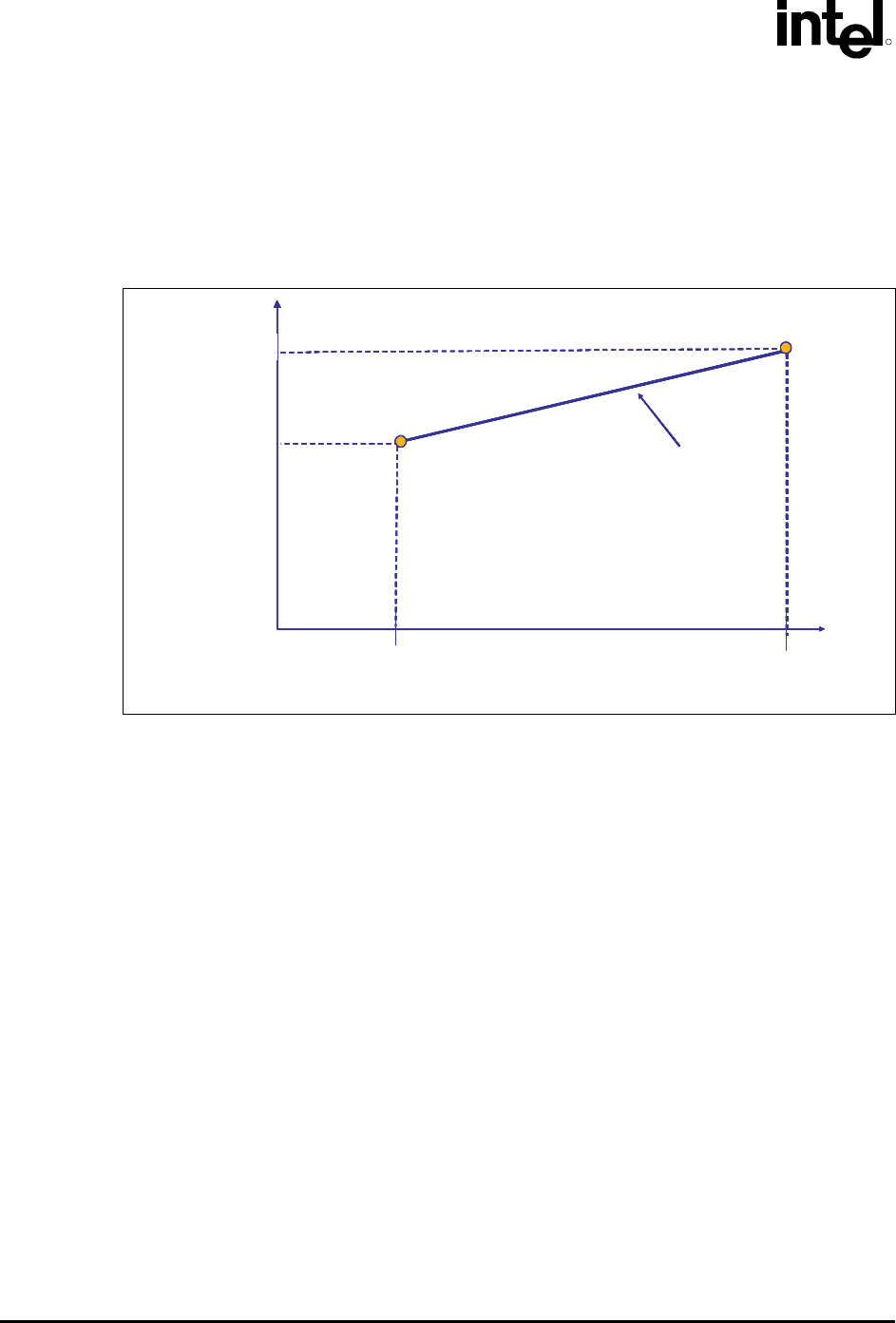64-bit Intel Xeon Processorwith 1MB L2 Cache Thermal/Mechanical Design Guidelines
Table Of Contents

Thermal/Mechanical Reference Design
R
12 64-bit Intel
®
Xeon™ Processor MP with 1 MB L2 Cache
Thermal/Mechanical Design Guidelines
Where:
y = Processor case temperature, T
CASE
(°C)
x = Processor power consumption (W)
a = Case-to-ambient thermal resistance, Ψ
CA
(°C/W)
b = Processor local ambient temperature, T
LA
(°C)
Figure 2-3. Thermal Profile Diagram
Pcontrol_Base TDP
T
CASE
MAX
Power
Thermal Profile
@Pcontrol_Base
T
CASE
MAX
T
CASE
T
CASE
MAX @
Pcontrol_base
T
CASE
MAX
Pcontrol_Base TDP
T
CASE
MAX
Power
Thermal Profile
@Pcontrol_Base
T
CASE
MAX
T
CASE
T
CASE
MAX @
Pcontrol_base
T
CASE
MAX
The higher end point of the Thermal Profile represents the processor’s TDP and the associated
maximum case temperature (T
CASE
MAX). The lower end point of the Thermal Profile represents the
power value (Pcontrol_base) and the associated case temperature (T
CASE
MAX@Pcontrol_base) for
the lowest possible theoretical value of T
CONTROL
(see Section 2.2.3). This point is also associated
with the T
CONTROL
value defined in Section 2.2.2. The slope of the Thermal Profile line represents
the case-to-ambient resistance of the thermal solution with the y-intercept being the local processor
ambient temperature. The slope of the Thermal Profile is constant between P
CONTROL BASE
and TDP,
which indicate that all frequencies of a processor defined by the Thermal Profile will require the
same heatsink case-to-ambient resistance.
To satisfy the Thermal Profile specification, a thermal solution must be at or below the Thermal
Profile line for the given processor when its diode temperature is greater than T
CONTROL
(refer to
Section 2.2.2). The Thermal Profile allows the customers to make a trade-off between the thermal
solution case-to-ambient resistance and the processor local ambient temperature that best suits their
platform implementation (refer to Section 2.3.3). There can be multiple combinations of thermal
solution case-to-ambient resistance and processor local ambient temperature that can meet a given
Thermal Profile. If the case-to-ambient resistance and the local ambient temperature are known for a
specific thermal solution, the Thermal Profile of that solution can easily be plotted against the
Thermal Profile specification. As explained above, the case-to-ambient resistance represents the
slope of the line and the processor local ambient temperature represents the y-axis intercept. Hence
the T
CASE
values of a specific solution can be calculated at the TDP and Pcontrol_base power levels.
Once these points are determined, they can be joined by a line, which represents the Thermal Profile
of the specific solution. If that line stays at or below the Thermal Profile specification, then that
particular solution is deemed as a compliant solution.










